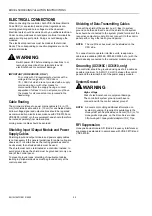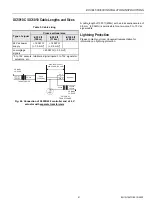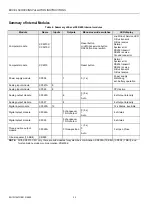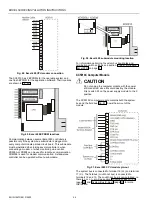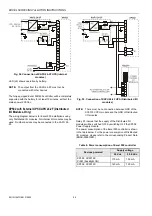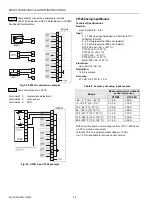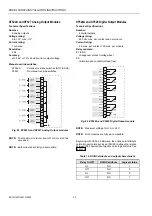
EXCEL 500/600 INSTALLATION INSTRUCTIONS
4.
Select one of the transformers of the CRT-series or
1450 series from the tables on the previous page or
take a commercially available standard transformer
fulfilling the requirements listed in Table 14.
5.
Make sure that the communication module is attached
to the controller housing.
IMPORTANT
The transformer feeding the Excel 500 Controller
must be in the same cabinet. For the selection of the
transformer, the max. DC current must be
considered if field devices with DC load are used.
The secondary side of the transformer must not be
connected to earth ground.
Fig. 71. Connecting the power supply
6.
Connect the 24 Vac (-) on the secondary side of the
transformer to terminal 1 on the Screw Terminal Block.
7.
Connect the 24 Vac on the secondary side of the
transformer to terminal 2 on Screw Terminal Block.
Fig. 72. Connecting to a screw terminal
IMPORTANT
If there already are additional transformers, for
example supplying actuators or active sensors,
connect the 24 Vac (-) (secondary side) of the
transformers together.
8.
Attach the terminal blocks to the housing as shown in
Fig. 73. Attaching screw terminal block
Pull-Up Resistor Handling (O.S. 2.04.00 or higher,
except for XFL521A)
High-Impedance Sensors and Active Sensors
When high-impedance sensors and active sensors are
connected to the inputs, the recognized value will not differ
significantly from the measured value if the pull-up resistor is
de-activated as follows:
Put the character “@” as the first digit of the chosen input
characteristic name in the CARE text editor.
Example:
Characteristic name: @0-10V; the internal pull-up resistor is
disabled.
10 Vdc
200K ohm
Vi
ground
Fig. 74. Analog input / high-impedance sensors
NTC and Low-Impedance Sensors
Characteristic name: NTC; the internal pull-up resistor is
enabled.
EN1R-1047GE51 RR0902
34

